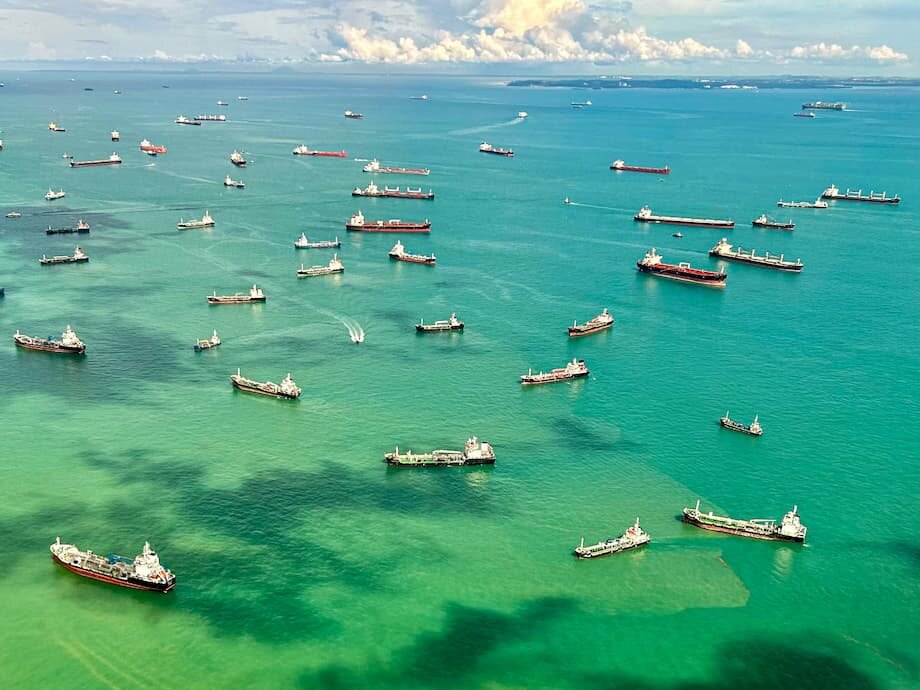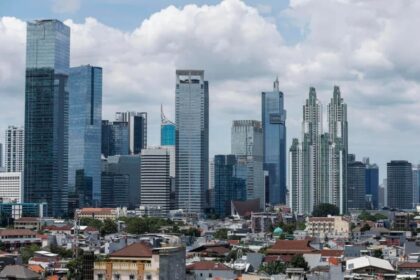Piracy Surge in Southeast Asia’s Vital Shipping Lanes
In the first half of 2025, the straits of Malacca and Singapore—two of the world’s most important maritime corridors—have witnessed a dramatic surge in piracy and armed robbery. According to the Regional Cooperation Agreement on Combating Piracy and Armed Robbery against Ships in Asia (ReCAAP) Information Sharing Centre (ISC), 80 incidents were reported between January and June 2025, nearly quadrupling the 21 incidents recorded during the same period in 2024. This escalation has raised alarms throughout the global shipping industry, as these straits are essential arteries for international trade, carrying up to 60% of global maritime commerce and serving as a chokepoint between the Indian and Pacific Oceans.
- Piracy Surge in Southeast Asia’s Vital Shipping Lanes
- Why Are the Malacca and Singapore Straits So Critical?
- Nature of the Recent Piracy Surge
- What’s Behind the Sudden Spike?
- Impact on Global Trade and Seafarer Safety
- How Are Authorities and the Industry Responding?
- Challenges and the Path Forward
- In Summary
Why Are the Malacca and Singapore Straits So Critical?
The Malacca and Singapore Straits form a narrow passage between the Malay Peninsula and the Indonesian island of Sumatra, connecting the Indian Ocean to the South China Sea and onward to the Pacific. Each year, an estimated 90,000 merchant vessels—ranging from massive bulk carriers and tankers to container ships—navigate these waters. The Singapore Strait alone is responsible for about 30% of global trade, making it one of the busiest and most strategically significant shipping lanes on the planet.
This high volume of traffic, combined with the straits’ narrowness and the need for vessels to slow down in certain sections (notably the Phillip Channel), creates ideal conditions for opportunistic criminals. Ships are often forced to reduce speed, making them vulnerable to small, fast-moving boats operated by pirates and robbers.
Nature of the Recent Piracy Surge
Most of the 2025 incidents have been classified as low-level armed robberies rather than full-scale acts of piracy. According to ReCAAP and the International Maritime Bureau (IMB), the majority of these crimes are opportunistic and non-confrontational, with perpetrators typically fleeing upon detection. However, the sheer volume of incidents and the occasional use of weapons—such as knives or gun-like objects—have heightened concerns for crew safety and the security of international commerce.
Of the 80 incidents reported in the first half of 2025, none were classified as Category 1 (the most serious, involving firearms or hostage-taking). About 90% resulted in no injuries, though seven confrontations involved knives or replica weapons, and one crew member sustained a minor injury. Bulk carriers were the most frequently targeted (52%), followed by tankers (24%) and container vessels (11%).
IMB data reveals that the Singapore Strait alone accounted for 57 incidents—about 63% of all global maritime crimes in the first half of 2025. The IMB also noted a 95% success rate for boardings in the Singapore Strait, with pirates increasingly targeting large vessels exceeding 150,000 deadweight tons (DWT).
How Do Pirates Operate in These Waters?
Perpetrators are often part of loosely organized crime groups based on remote Indonesian islands such as Riau and Cula. They typically use small, flat-bottomed wooden boats called sampans to approach ships under cover of darkness. Using long poles with hooks and ropes, they climb aboard, seeking to steal valuables such as engine spare parts, ropes, and crew members’ belongings. In most cases, the criminals are unarmed or carry only knives, and they avoid confrontation whenever possible.
Daniel Ng of the Asian Shipowners’ Association explained that many of these individuals face economic hardship, with factors like unemployment and poverty driving them to supplement their income through maritime theft. Increasingly, these groups are exploiting technological loopholes, such as using Automatic Identification System (AIS) data to track ship movements and identify vulnerable targets.
What’s Behind the Sudden Spike?
Analysts are divided on the root causes of the 2025 surge. One widely cited factor is the diversion of global shipping traffic from the Red Sea, where attacks by Yemen’s Houthi rebels have disrupted traditional trade routes. As vessels reroute through the Malacca and Singapore Straits, congestion increases, creating more opportunities for criminals.
Other contributing factors include:
- Economic hardship in coastal communities, exacerbated by declining fish stocks and severe monsoon weather, pushing some to maritime crime.
- Technological advances that allow pirates to track ships more effectively and exploit security gaps.
- Low risk of severe punishment or confrontation, as most incidents are non-violent and perpetrators often escape detection.
Comparing Regional and Global Trends
The surge in Southeast Asia mirrors a broader global uptick in maritime crime. The IMB reported a 50% increase in global piracy incidents in the first half of 2025 compared to the previous year, with 90 cases worldwide. However, the nature of piracy in Asia differs from other hotspots like the Gulf of Guinea, where violent kidnappings and ransom demands are more common. In Asia, most incidents involve petty theft and rarely escalate to violence, though the psychological impact on seafarers remains significant.
Impact on Global Trade and Seafarer Safety
The Malacca and Singapore Straits are not just regional waterways—they are the lifeblood of global commerce. Any disruption here can have ripple effects across international supply chains, affecting everything from energy supplies to consumer goods. The recent surge in piracy has heightened concerns among shipping companies, insurers, and governments about the safety of crews and the security of cargo.
Michael Howlett, Director of the IMB, emphasized the gravity of the situation:
“The Singapore Strait is a critical shipping route, with ships carrying roughly 30% of global trade. The rise in incidents is deeply concerning as it puts the safety of seafarers and the security of international commerce at risk.”
While most incidents have not resulted in serious injuries, the presence of armed perpetrators and the potential for escalation remain a constant threat. In 2025 alone, 13 crew members were held hostage, five threatened, three injured, and one assaulted in the Singapore Straits.
How Are Authorities and the Industry Responding?
Regional governments and maritime agencies have responded to the surge with a combination of increased patrols, technological innovation, and enhanced cooperation. Indonesia, Malaysia, and Singapore have intensified joint patrols and intelligence sharing, building on the Malacca Strait Patrols initiative launched in 2004. These efforts include coordinated sea and air patrols, as well as real-time information exchange through platforms like Singapore’s Information Fusion Centre.
Singapore has deployed advanced surveillance tools, such as the Diodon drone and the Spyder hull-climbing robot, to monitor vessel traffic and respond rapidly to suspicious activity. The Republic of Singapore Navy has also introduced the Maritime Security Unmanned Surface Vessel, an autonomous patrol craft equipped with advanced navigation and communications systems.
Law enforcement has seen some success: in July 2025, Indonesian police arrested 11 suspects after a failed tanker boarding in the Singapore Strait, demonstrating the effectiveness of cross-border cooperation.
Industry Best Practices and New Guidelines
In response to the changing threat landscape, leading maritime organizations—including BIMCO, ICS, INTERCARGO, INTERTANKO, and OCIMF—released an updated set of Best Management Practices (BMP Maritime Security) in March 2025. This comprehensive guide consolidates regional advice into a global framework, offering practical steps for ship operators to assess risks, plan voyages, and respond to incidents.
Key recommendations include:
- Maintaining a sharp lookout, especially at night and in high-risk areas
- Implementing physical barriers and security patrols on board
- Reporting all incidents immediately to coastal authorities and information centers
- Sharing information about suspicious activity with other vessels and maritime agencies
Shipping companies are also encouraged to train crews in security protocols and to use technology—such as AIS management and real-time alerts—to reduce vulnerability. Industry forums have highlighted the importance of mutual support among ships, with examples of vessels warning each other about suspicious small boats and activating Singapore’s Vessel Traffic Information System to prevent unauthorized boardings.
Challenges and the Path Forward
Despite increased vigilance and cooperation, several challenges persist. The vastness and complexity of the straits make it difficult to monitor every vessel, especially at night. Economic pressures in coastal communities continue to drive some individuals toward maritime crime, while the adaptability of criminal groups means that security measures must constantly evolve.
Experts caution that while the current wave of piracy is less violent than in previous decades, complacency is not an option. The psychological toll on seafarers, the risk of escalation, and the potential for major disruptions to global trade all underscore the need for sustained, coordinated action.
As Vijay Chafekar, executive director of ReCAAP ISC, noted:
“Most Asian waters have become safe, but concerns remain in a small area of the straits of Malacca and Singapore. The intention is usually petty theft, but the presence of armed perpetrators can have a significant psychological impact on crew members.”
In Summary
- Piracy and armed robbery incidents in the Malacca and Singapore Straits have nearly quadrupled in the first half of 2025, with 80 cases reported.
- Most incidents are low-level thefts, but the sheer volume and occasional use of weapons have raised concerns for crew safety and global trade security.
- The surge is linked to increased shipping traffic, economic hardship in coastal communities, and technological exploitation by criminals.
- Regional authorities have intensified patrols and deployed advanced technology, while the shipping industry has updated best practices to mitigate risks.
- Continued vigilance, cooperation, and adaptation are essential to safeguard these vital maritime corridors and the global supply chain they support.












